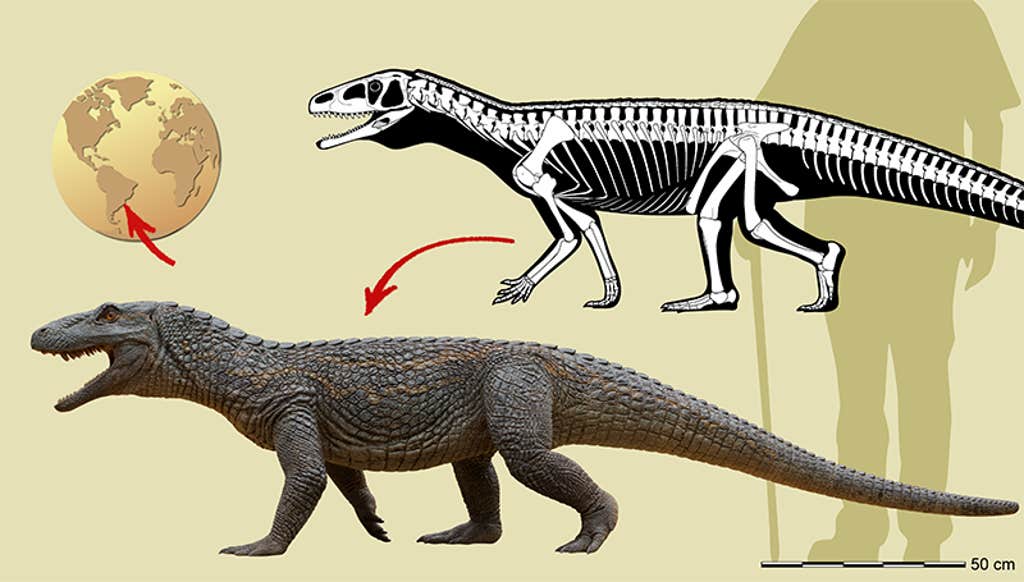This is no dinosaur—this big, meat-eating lizard came before the dinos dominated. The latter half of the name of this newly designated species, Tainrakuasuchus bellator, translates from Latin to “warrior.” It’s a fitting name, given that T. bellator proved a fierce predator some 240 million years ago.
This creature belonged to a branch of the tree of life that included other ancient precursors of today’s crocodiles and alligators. Its remains were unearthed in southern Brazil this past May—scientists found a partial skeleton that included parts of the lower jaw, vertebral column, and pelvic girdle, as reported this week in the Journal of Systematic Palaeontology.

The ancient bones offer tantalizing hints into this giant lizard’s life. Researchers from the Universidade Federal de Santa Maria estimated that T. bellator measured nearly 8 feet long and weighed around 130 pounds, and likely lived near a wide stretch of desert. The remains suggest that T. bellator’s back was covered in bony places called osteoderms—adornments shared by modern crocodiles.
Mobile and long-necked, T. bellator may have snatched prey with a jaw brimming with sharp teeth that bent inward. Around the Middle Triassic period, crocodilian ancestors like T. bellator ran the show and evolved all sorts of unique features and lifestyles. Pseudosuchia, the group of animals it belonged to, also included, for instance, small predatory species that could catch even the swiftest prey. Overall, some types of pseudosuchian fossils “have been found across much of the world,” according to the paper.
Read more: “How American Tycoons Created the Dinosaur”
The new finding “shows that, in what is now southern Brazil, reptiles had already formed diverse communities adapted to various survival strategies,” study co-author Rodrigo Temp Müller, a paleontologist at Universidade Federal de Santa Maria, said in a statement. “Moreover, this discovery reveals that such diversity was not an isolated phenomenon.” But there’s still much to learn about pseudosuchians. The T. bellator remains were relatively rare finds, because researchers have scarcely encountered fossils from some of their lineages.
Yet these old bones have also added evidence to an intriguing evolutionary relationship that links fauna inhabiting far off-lands. Based on analysis of its Pseudosuchia family tree, T. bellator appears to be closely related to Mandasuchus tanyauchen, a fellow crocodilian ancestor whose remains were recovered in Tanzania. When both species stalked the Earth, about 240 million years ago, the planet consisted of a single supercontinent called Pangaea, so these animals had lots of room to roam. Both locations, before they were separated by the Atlantic Ocean, shared other similar types of species.
Many pseudosuchians perished around the time of the Triassic-Jurassic extinction event roughly 200 million years ago—but we still have plenty of ferocious crocs to remind us of these extinct predators that once dominated their ecosystems. ![]()
Enjoying Nautilus? Subscribe to our free newsletter.
Lead image: Caio Fantini
































